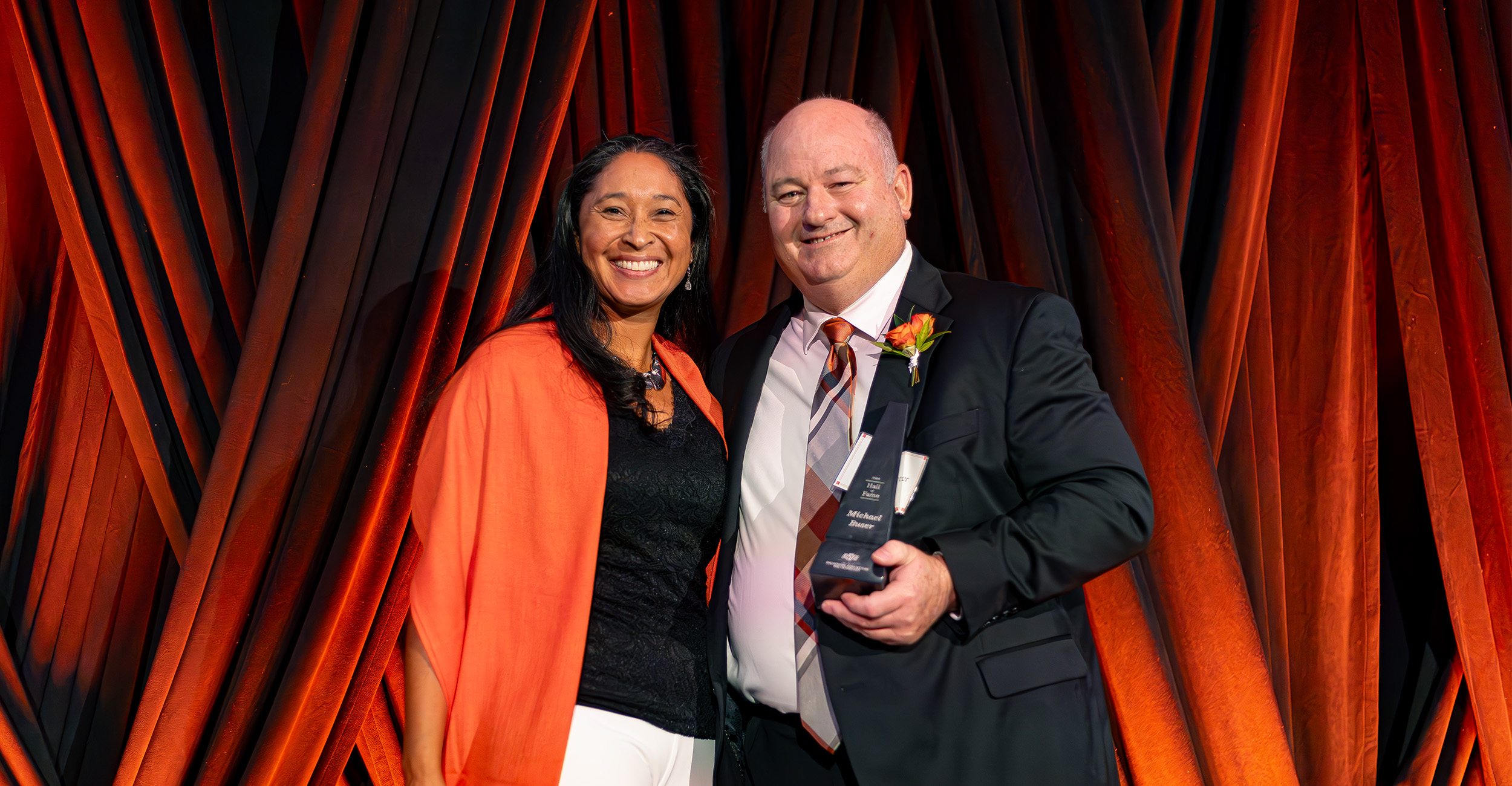
CEAT 2024 Hall of Fame Inductee: Michael Buser
Tuesday, October 14, 2025
Media Contact: Kristi Wheeler | Marketing and Communications Manager | 405-744-5831 | kristi.wheeler@okstate.edu
Dr. Michael Buser graduated from Oklahoma State University in 1995 with his bachelor’s degree and in 1997 with his master’s degree, both in biosystems engineering, going on to earn his doctorate degree in 2004 in biological and agricultural engineering from Texas A&M University.
Buser currently serves as a Professor, Endowed Chair in Cotton Engineering, Ginning, and Mechanization at Texas A&M University, where his mission is to expand the cotton engineering program. He is currently the lead faculty member for Texas A&M biological and agricultural engineering capstone courses and finds enjoyment working with undergraduate and graduate students.
Before his current role, Buser served as the inaugural USDA Agricultural Research Service National Program Leader for Engineering. Buser managed or co-managed 91 in-house appropriated research projects and 576 non-in-house projects. Buser is the founder and was the National Leader for the USDA Partnerships for Data Innovations, a national program focused on standardizing, integrating and automating agricultural research data through innovation.
Buser has been nationally recognized as a distinguished communicator for agriculture and technology. Most notably, he is very proud of his research team that conducted the National Cotton Gin Particulate Matter Emission study, which provided $1.46 billion in cost-saving efforts for the cotton ginning industry. Data from this national study is used in nearly all the cotton ginning air quality permits in the United States.
Buser has been involved in a wide range of agricultural research that includes air quality, water conservation, food safety, machinery design, electronic design, data science, artificial intelligence, logistics and conservation stewardship. You will often hear Buser attribute his research successes to his incredible interdisciplinary and multi-institutional teams and outstanding stakeholders.
Find a career you love to do, a job that will allow you to be passionate about what you do and always be looking out for those unexpected doors to open.
Photo: Annie Buford
Story by: Ashleigh Green | IMPACT Magazine
